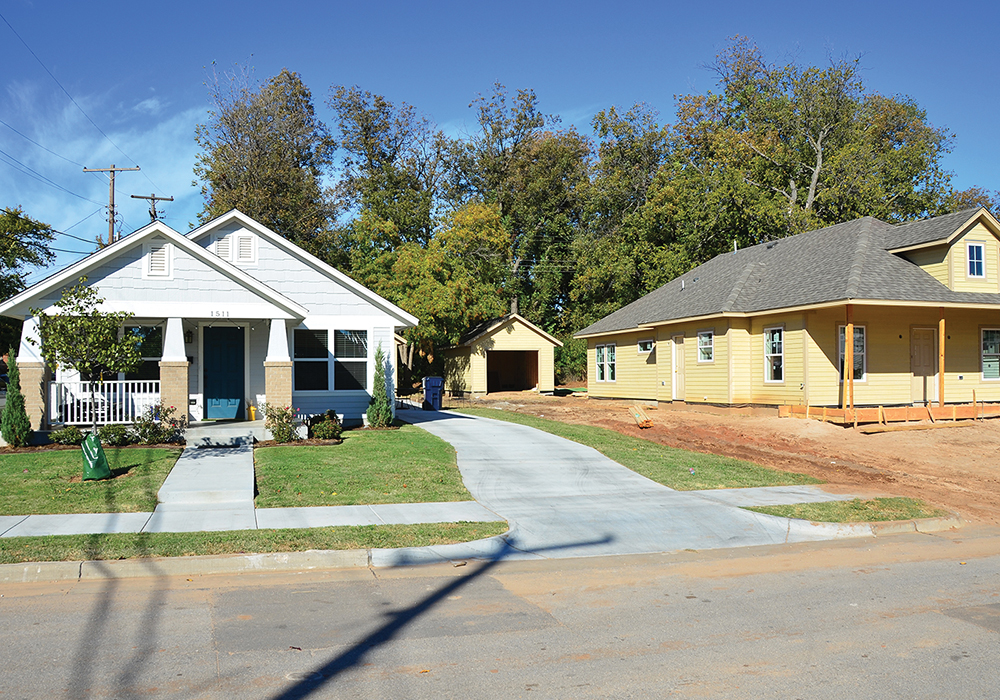Oklahoma City, Oklahoma
planokc
2018 Daniel Burnham Award for a Comprehensive Plan
Summary
Oklahoma City's last adopted comprehensive plan was in 1977, and, despite several minor updates, the plan contained policies allowing urban sprawl across the city's 621 square miles. A new plan was needed to curtail haphazard growth and put in place policies for smarter land use.
The city took measured steps to develop a thoughtful, ambitious, yet attainable plan that the community would support. The new plan, planokc, was the product of five years of extensive research, analysis, discussion, and public engagement. Its tagline, "Planning for a healthy future," signified the plan's priorities around human, economic, and environmental health.
The plan called for the city's first bicycle-pedestrian master plan, bikewalkokc, which has fueled interest in a multimodal transportation system coupled with reinvestment in neighborhoods. The plan also called for other "firsts" for Oklahoma City, such as a Sustainability Plan, Historic Preservation Plan, and Art Master Plan, which have been adopted or are almost complete.
Process
The planokc team took a measured, structured approach using several innovative systems to ensure buy-in from all stakeholders, including:
- a multi-faceted public engagement program to win support from residents
- a sophisticated model to evaluate outcomes of various development patterns
- a compatibility system to encourage land use integration
- land use and street typologies that reinforce the relationship between land use and transportation
- an innovative website with an interactive map and tools to track the plan's progress
The biggest challenge for planners was illustrating how past development patterns were unsustainable by consuming greenfield land and leaving older neighborhoods to decay. The planning team used growth scenario planning to shift this mindset.
Using intensive modeling and data analysis, planners created three future growth scenarios, complete with measures of environmental quality, resource consumption, and travel patterns. A fiscal impact analysis and health impact assessment showed potential financial and health impacts for all three scenarios.
With this information, residents were able to make an educated choice about which scenario was the healthiest, most efficient, and sustainable growth option.

A bicyclist enjoys one of the first protected bike lanes built under the city's planokc.
Engagement
Planners used a wide range of tools and approaches to maximize engagement. Their strategy was two-fold: to reach underrepresented populations, such as minorities, young adults, low-income families, and families with small children, and to go to places where people were already gathering. Workshops were held in neighborhoods populated by Hispanic and African American residents, and Spanish and Vietnamese translations of presentation materials were provided.
They collected surveys from college students — an underserved demographic — and provided videos, documents, and presentations via their interactive website. Several studies and surveys were funded by a HUD Sustainable Communities Grant. The Chamber of Commerce held a planning-focused retreat for business leaders.
An estimated 20,000 people participated in the engagement process, and the thorough, detailed information gained from the public paved the way for a smooth adoption of the plan by the planning commission and city council.

planokc was based on a scenario that anticipated a significant amount of infill development, similar to these homes in downtown Oklahoma City.
Results
planokc used fiscal impact analyses, land use and transportation analyses, and health impact analyses to inform choices that will shape the city's future fiscal health, quality of life, environmental health, and traffic patterns. This helped city leaders and residents gauge the potential of each analyzed scenario. In addition, a web version of planokc with an interactive map and development guide allowed users to see which policies apply to specific locations.
The success of planokc has created a more progressive-minded population in Oklahoma City, where residents are more open to new ideas for the future. It changed the "Land Run" mentality that was prevalent in the city before that time and shifted it toward a smarter approach to land use planning.
The plan shows how key stakeholders — city planners, elected officials, special interest groups, and residents — can work together to create a comprehensive plan that works for everyone.

Visitors stop by the planokc exhibit to provide feedback about the plan's growth scenarios.


